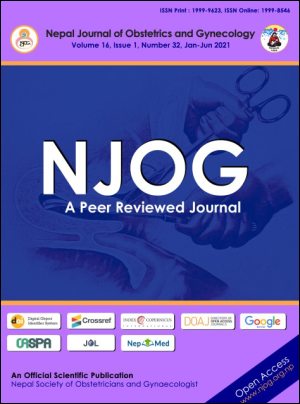Classification of Caesarean Section: A Scoping Review of the Robson classification
Keywords:
Caesarean section, Classification system, Robson classificationAbstract
Caesarean section (CS) rate is rising dramatically worldwide. WHO recommended CS rate of 10-15% at populational level would not be the ideal rate at the hospitals level due to the differences on population they have been serving. At the hospital level, a perfectly effective system is necessary to understand the trends and causes of rising trends of CS as well as to implement effective measures where necessary to control the same. Hence, WHO recommended the Robson classification, which is also called the 10-group classification of CS (TGCS) as a global standard tool to assess, monitor and compare CS rates within healthcare facilities over time, and between health facilities. The Robson classification, proposed by Dr Michael Robson in 2001, is a system that classifies all women at admission at a specific health facility for childbirth into 10 groups based on five basic obstetric characteristics (parity, gestational age, onset of labour, foetal presentation and number of foetuses). This classification is easy and simple and mutually exclusive, highly reproducible, easily applicable, and useful to change clinical practice. It has many strengths such as simplicity, flexibility (further subdivisions can be made to increase homogeneity within groups). This classification helps to identify and analyse the contribution of each group to overall CS rates. It also allows distinguishing the main group of women who contributes most and least to the overall CS rates; so that the CS rates can be monitored in a meaningful, reliable, and action-oriented manner in each health facilities for optimal use of CS.
Downloads
Downloads
Published
How to Cite
Issue
Section
License

This work is licensed under a Creative Commons Attribution-NonCommercial 4.0 International License.
Copyright on any research article in the Nepal Journal of Obstetrics and Gynaecology is retained by the author(s).
The authors grant the Nepal Journal of Obstetrics and Gynaecology a license to publish the article and identify itself as the original publisher.
Articles in the Nepal Journal of Obstetrics and Gynaecology are Open Access articles published under the Creative Commons CC BY-NC License (https://creativecommons.org/licenses/by-nc/4.0/)
This license permits use, distribution and reproduction in any medium, provided the original work is properly cited, and it is not used for commercial purposes.



